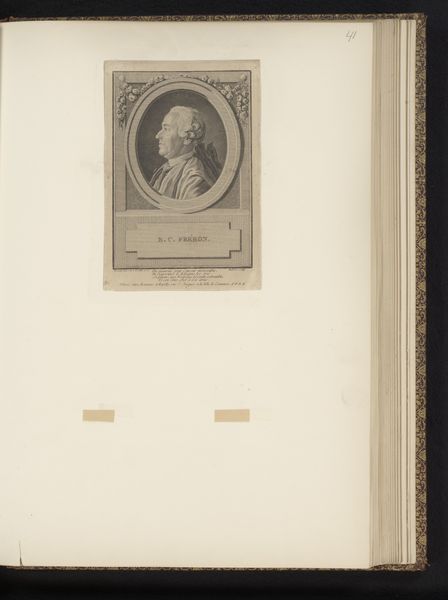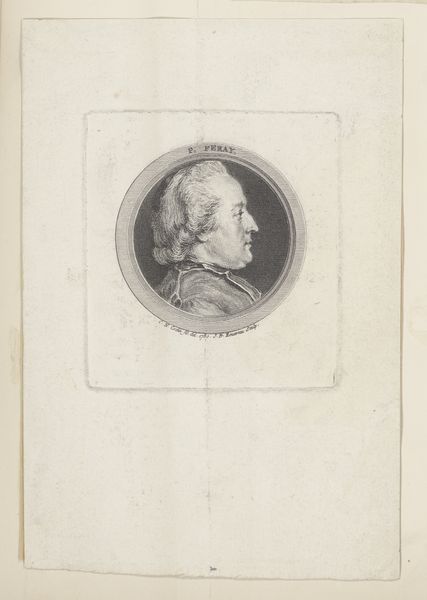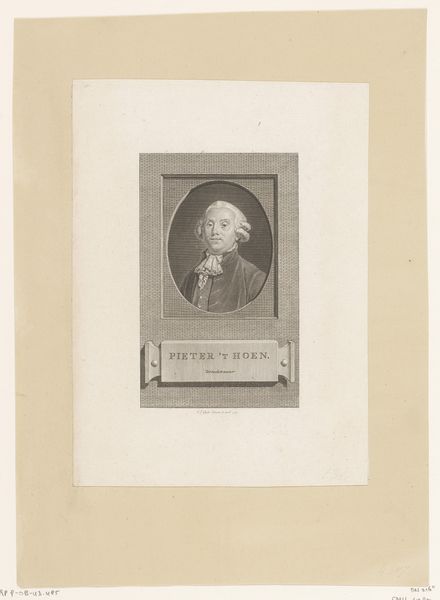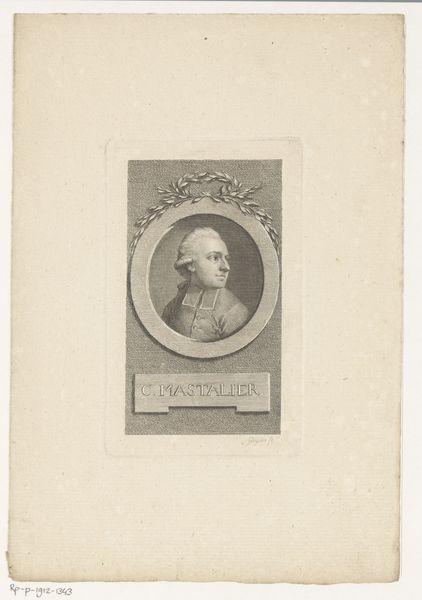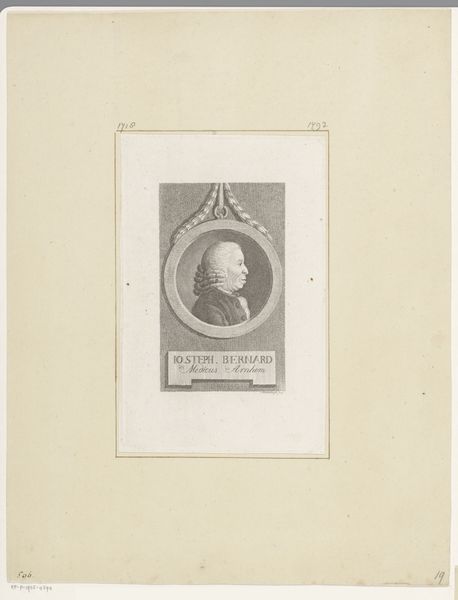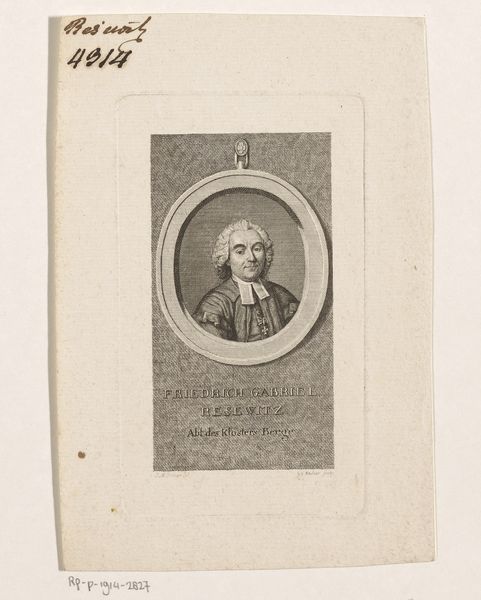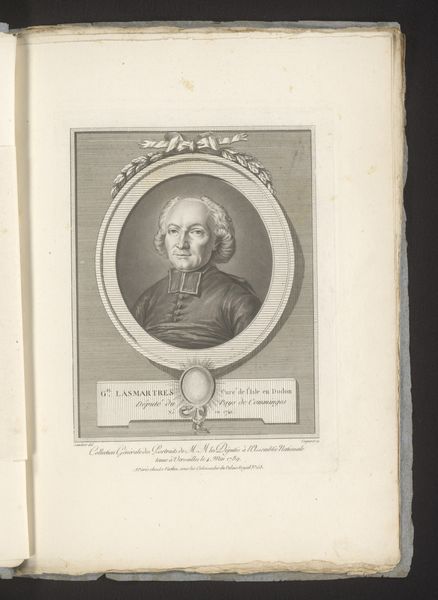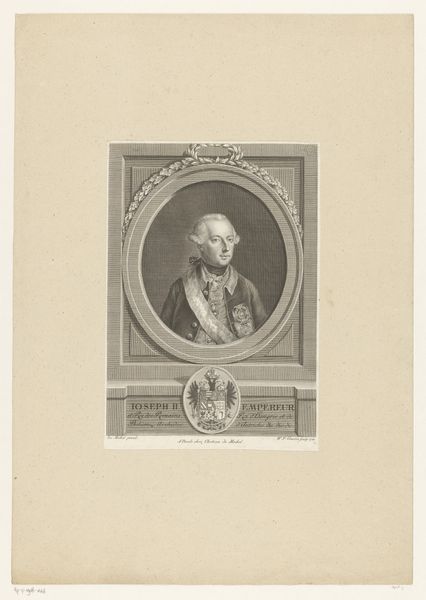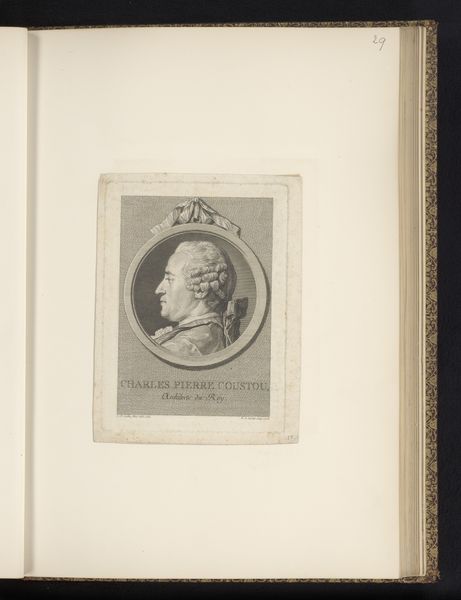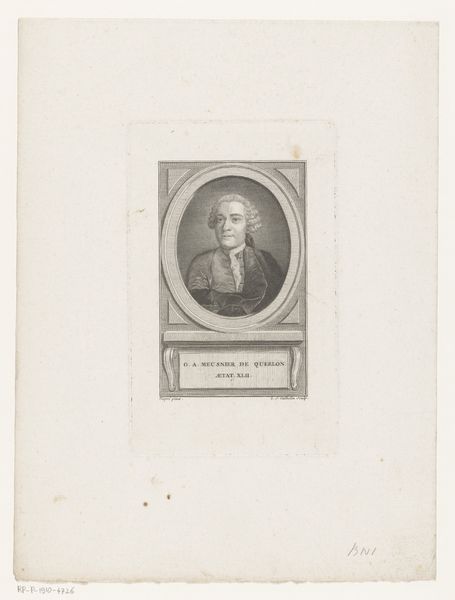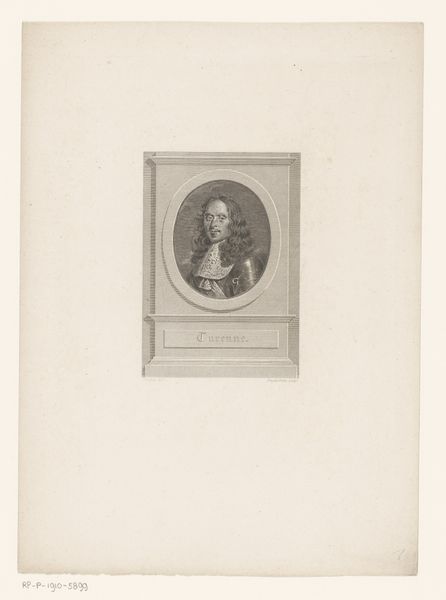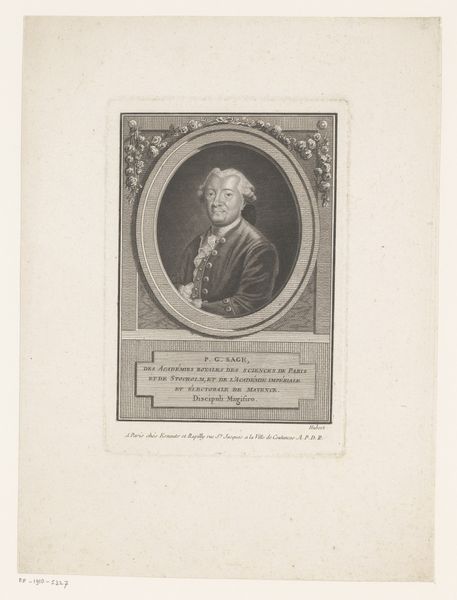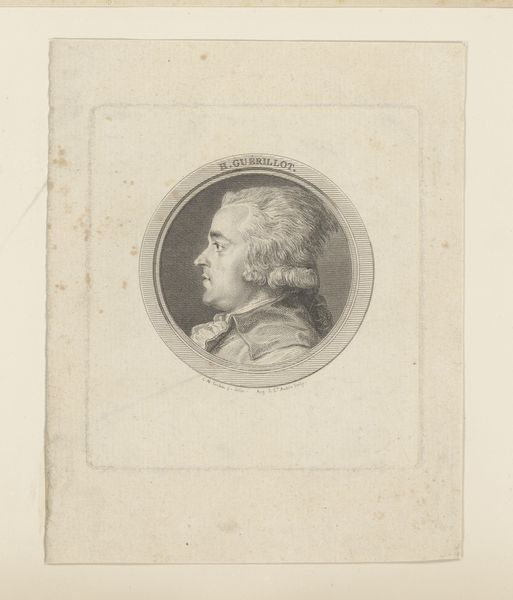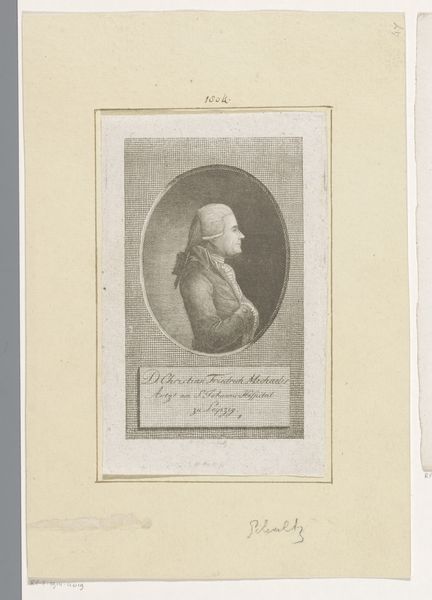
drawing, print, intaglio, paper, engraving
#
portrait
#
drawing
#
baroque
#
ink paper printed
# print
#
intaglio
#
paper
#
15_18th-century
#
line
#
academic-art
#
engraving
Dimensions: height 275 mm, width 198 mm
Copyright: Rijks Museum: Open Domain
Editor: Here we have Carlo Domenico Melini's "Portret van Jean Bruté" from 1760, created using intaglio and engraving. I'm struck by the fine detail achieved through printmaking, specifically, all the time and handiwork required. How might we interpret the material conditions that shaped its creation? Curator: That's a great entry point. Consider the division of labor. An engraver like Melini might be commissioned by a publisher or even Jean Bruté himself to produce this portrait. The material constraints of engraving – the copper plate, the tools, the press – all dictate the aesthetic. The lines, the hatching, they’re not just stylistic choices, but are consequences of the process. What does it tell us about status or consumption in the 18th Century? Editor: I hadn't considered that connection. So, the act of creating this portrait through engraving not only reflects Bruté's social standing, since the engraving process involved collaboration, but the very labor behind its production also played a key role? Curator: Exactly. These prints circulated, creating and reinforcing social hierarchies. And think about the distribution networks. How did images like this travel? Where were they consumed? Also, do you see ways in which printmaking democratized image making or reproduced existing inequities in different form? Editor: This makes me think about the ways printed portraits made likeness more accessible than painted ones. At the same time, that doesn’t necessarily address power. Curator: Precisely. Consider the role of paper. Who controlled its production and distribution? Paper was far from an innocent surface, reflecting access and status. These were trade items with real commercial value beyond the image produced upon them. Editor: Wow, I see. Looking at art this way really shifts my focus from just the image to the intricate networks of materials, labour, and economics behind it. It also pushes me to look for who might have been excluded. Thanks! Curator: It's about acknowledging art making not as some singular flash of inspiration, but the outcome of collective actions within particular social contexts. Glad to share some things I've learned.
Comments
No comments
Be the first to comment and join the conversation on the ultimate creative platform.
